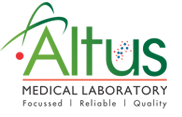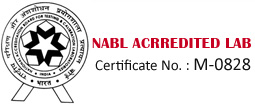Anti Mullerian Hormone (AMH) Test In Chandigarh
INTERPRETATION & NOTES
TEST RUN ON COBAS e411
METHOD – ECLIA
REFERENCE RANGE –
FEMALE -REPRODUCTIVE AGE
Optimal Fertility – 4.0-6.8 ng/ml
Satisfactory fertility – 2.2-4.0 ng/ml
Low fertility – 0.3-2.2 ng/ml
Very low – 0.0-0.3 ng/ml
High level – >6.8 ng/ml
USEFUL FOR
1. Assessment of menopausal status including premature ovarian failure.
2. Assessing ovarian status, including follicle development, ovarian reserve, and ovarian responsiveness and as a part of an evaluation for infertility and assisted reproduction protocols such as in vitro fertilization.
3. Assessing ovarian function in patients with PCOD.
4. Evaluation of and infants with ambiguous genitalia and other intersex conditions.
5. Evaluating testicular function in infants and children.
Clinical significance :- Anti-Müllerian hormone also known as AMH is a protein that, in humans, is encoded by the AMH gene. It inhibits the development of the Müllerian ducts (paramesonephric ducts) in the male embryo. It has also been called Müllerian inhibiting factor (MIF), Müllerian-inhibiting hormone (MIH), and Müllerian-inhibiting substance (MIS). AMH is expressed by granulosa cells of the ovary during the reproductive years, and controls the formation of primary follicles by inhibiting excessive follicular recruitment by FSH. It, therefore, has a role in folliculogenesis and some authorities suggest it is a measure of certain aspects of ovarian function useful in assessing conditions such as polycystic ovary syndrome and premature ovarian failure. It is useful to predict a poor ovarian response in in vitro fertilization (IVF), but it does not appear to add any predictive information about success rates of an already established pregnancy after IVF
Note : Assay results should be interpreted only in the context of other laboratory findings and the total clinical status of the patient.



